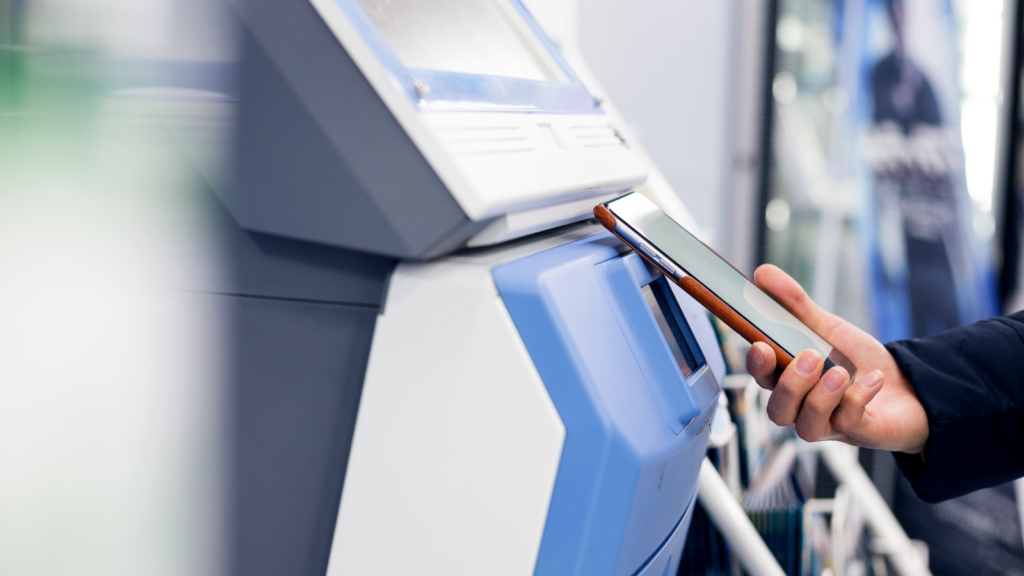Discover the power of customer experience for gaining a competitive edge in the retail industry.
Retailers started shifting focus from in-store transactions to online sales more than a decade ago, but the global pandemic forced the entire retail industry to supercharge the growth of ecommerce.
In 2023, the National Retail Federation (NRF) forecasts that online and other non-store sales will rise as much as 12%. In-store foot traffic, meanwhile, remains unsteady as consumers embrace online shopping to purchase items from their favorite retailers — whether that means receiving a delivery at their doorstep or still visiting a retail location but choosing curbside pickup.
Online sales are on the rise, but in-store transactions aren’t going away. So, what does this mean for the retail industry? Retailers need to engage with customers across all touchpoints in the customer journey. Doing so effectively means a retailer retains existing customers and continues attracting new customers, ensuring continued sales growth.
Why Customer Experience Matters in the Retail Industry
Customer experience (CX) is critical to the success of any business in the retail industry.
If a mobile application or website from one brand is more enjoyable than another brand’s, customers will switch brands without thinking twice. It’s true for in-store experiences, too. If the store layout or checkout process is smooth, expect customer loyalty to be strong.
Customers, whether shopping in-store or online, just want to feel engaged and free of friction throughout their experiences with a brand.
5 Ways Retail Industry Leaders Embrace Customer Experience as a Competitive Advantage
Modern customer experience is all about personalization, no matter the channels in which interactions occur. As the online shopping trend evolves, CX becomes a full-scale, hybrid, and immersive effort where customers seek engagement through a wide range of ways to connect with the brand.
Here’s how leaders in the retail industry are embracing customer experience as a competitive advantage.
#1. All customers are new customers
Converting a customer doesn’t guarantee they’ll stay converted. With each new channel an existing customer interacts with a brand through, there’s an opportunity to win over that customer again.
What if a customer orders online and chooses in-store or curbside pickup? If the experience is positive, the customer may want to try shopping in the retail location next. So the in-store shopping experience becomes a new opportunity to continue delighting this customer.
Remember this: Every touchpoint is a chance to engage and delight customers with positive experiences.
#2. Stay connected throughout the customer journey
Shopping experiences are more than just a customer identifying what they want and completing a purchase. After a transaction, delivery — often by a third party — continues the experience and most retailers can’t control this.
From a missed delivery to damaged goods, CX in the retail industry hinges a lot on that last mile. The good news is that you don’t have to lose communication with customers while orders are in transit.
Stay connected with customers by communicating when an order is shipped, the estimated delivery date, and a post-delivery follow-up to ensure the customer is satisfied with their order.
#3. Engage your employees for input and ideas
As customer patterns change, so do the value of your employees in various roles. While you may need fewer in-store associates, in-store shoppers and agents on the customer service team are increasing in value. It’s time to build new strategies for how to best utilize your employees’ skills, talents, and familiarity with the customer base as shopping styles evolve. Investing in your employees pays dividends.
Continuously listening to employees through pulse surveys will help you keep issues and obstacles manageable during uncertain times, increasing the chances for shopper success. Crowdsourcing ideas from top performers both increases their engagement while helping the company solve more problems via agile innovation.
Your employees know the customers because they work with them every day. Work with your team to determine the best assignments, schedules, and evolving duties to meet customer needs while optimizing the value of every team member.
#4. Agile innovation
“Agile” has become a keyword in recent years as businesses realize that customer trends are evolving faster than ever. Online shopping wasn’t immediately popular, but retailers that invested in websites and mobile apps over a decade ago were far more prepared than competitors who felt the brick-and-mortar model would remain dominant.
As your customers’ needs and expectations are changing rapidly, so must your approach.
To maximize performance, leading retailers are testing every innovation with immediate customer feedback and linking it to CX metrics including customer satisfaction (CSAT) and net promoter score (NPS®).
#5. Next-level personalization
No two customers are identical, and that’s why every brand in the retail industry needs personalization at the center of every experience.
Personalization ensures that, anywhere in the customer journey, every customer receives an experience individualized for who they are, what they’re interested in, and a variety of other factors. Known as experience orchestration, this practice delights customers and builds loyalty at scale.
Enhance Customer Experience in the Retail Industry with Medallia
What lies ahead for retail is agility and adaptation. Successful retailers are doubling down on always-on feedback to drive fast innovation. The climate for retail continues to rapidly change, and so must the retailers that want to lead. By staying focused and agile, this disruption actually transforms into a competitive advantage.
Whether your retail business is building an immersive in-store experience or focusing on growing online sales, customer experience remains paramount. Cultivating CX across every channel — both physical and digital — develops a base of loyal and enthusiastic customers who seek to reengage with your brand at every touchpoint.
Meet with a Medallia expert — we’ll take you through using customer experience as a competitive advantage in the retail industry.







